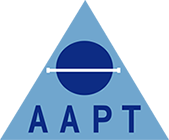News
AAPT CPD Scheme: what do assessors wish to see? Reflective Learning
A Continuing Professional Development (CPD) scheme for AAPT members to record and reflect their professional learning and development has been in place for some time now: in fact it has been ten years since the initial portfolio was on-line with interactive web-based multiple choice questions (Read Test & Reflect) introduced shortly after.
Since that time, over 40 CPD Award Certificates have been presented to AAPT members and well over 200 tests have been completed on-line. The AAPT was formed in 2003, with barely enough members to fit into a seminar room, and has seen membership subsequently increase to well over 300. Facts and figures and little acorns that have grown!
The AAPT exists to raise standards, and did not dwell on initial CPD achievements and Council reviewed the CPD scheme late 2014 launching a revised portfolio and guidance in January 2015.
Promoting professionalism is detailed in the Code of Conduct for all members:
Maintain, develop and keep up to date their professional competence and skills
With this in mind, AAPT raised the bar higher for the CPD Award to be presented – increasing both the total activity credits required and also the scope and detail of reflection upon activities undertaken.
So, seven months after the initial re-launch, and based on submissions to date, I thought it would be useful for members to read and digest a snapshot of what is required for the CPD Award. Applications in general have been good, but what must be enhanced is the recording of reflective learning. It must not simply be a case of statements such as “this activity has increased knowledge and I’m now better placed to help others”.
Looking at the new example in the revised portfolio, a model reflective statement is as follows:
What learning did you undertake? Why did you decide on this activity?
Attendance at South East and London Study event was a good opportunity to refresh my knowledge on neuropathology and understand more about toxicology as these were the two talks arranged.
Explain what you have learned and achieved through this activity?
I trained in neuropathology techniques many years ago so already had an understanding of this so wanted to see what has changed since then. I was very interested in the different way to incise the scalp for infants as although I have been an APT for a long time this was something I had not seen before. The different technique when opening the skull also meant that there were much clearer views of the neck and spine enabling easier removal of the brain. The information about why not to used ‘slings’ or blue roll was also very different to what I had previously been taught however the evidence regarding artefacts was very clear.
How have you applied or will you apply this learning?
When removing a brain I will try the new technique although I may ask for some neurological assistance at the time in case I do not remember the technique exactly. I have made arrangements to go and see this done at another centre for further training. It will also be something I discuss when taking post mortem consent as it changes the incision options that I previously knew about. Whilst I will not do this routinely I now know that other places may. I will check with centres we use regularly to ensure I have the right information. I will also be sure not to use the slings that I have previously as they leave marks on the brain which in turn can hinder diagnosis. I will change our SOPs to this to ensure that everyone else follows the direction of the Neuropathologist.
Remember your reflective learning needs to be detailed in what YOU have reflected. How you will apply your learning should be a detailed description of what you intend to do within your workplace. A line stating: ‘will implement at work, or will make changes’ will not be adequate. You should identify how your CPD has contributed to your service delivery, professional practice and personal development.
If you have any CPD questions you can send them to the AAPT at mail@aaptuk.org
Christian Burt
Professional Support Services Manager
